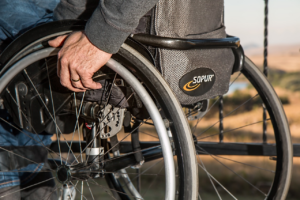
Burn injuries, varying in severity and cause, can lead to significant physical and psychological trauma. Despite the unpredictability of such incidents, understanding the crucial steps in dealing with burn injuries can help minimize pain, prevent complications, and accelerate the healing process. This guide will delve into these crucial steps, offering comprehensive insights on immediate measures, professional treatment options, and effective post-injury care.
Immediate measures to take when burns occur
The immediate response to burn injuries can significantly influence the healing process. When burns occur, the first step is to remove the person from the source of the burn, if it is safe to do so. The burn area should then be cooled gently using lukewarm — not cold — running water for up to 20 minutes.
After cooling the burn, it should be covered with a clean, non-adhesive bandage or cloth to protect the area and prevent infection. It’s essential to avoid applying adhesive bandages directly to the burn, as they can stick to the wound and cause further injury when removed.
While these initial steps can help manage minor burns, it’s crucial to seek immediate medical assistance for severe burns. This includes burns that are deep, cause significant pain, or cover a large area, especially on the face, hands, feet, or major joints. The people at https://www.duffyduffylaw.com/personal-injury/burn-injuries/ note that you can take legal action if your burns were caused by someone else’s negligence. Seeking legal aid can help you secure compensation for medical costs and lost wages, providing financial support during the recovery process.
Understanding different degrees of burns
Burns are classified into first, second, and third degree, each with distinct characteristics and requiring different treatment approaches. First-degree burns are the mildest, affecting only the top layer of the skin. These burns typically cause redness, mild swelling, and pain.
Second-degree burns are more severe, extending to the second layer of the skin. They cause red, white, or splotchy skin, swelling, and blisters. These burns may require professional medical treatment to prevent complications and promote healing.
Third-degree burns are the most severe, involving all layers of the skin and underlying tissues. They can cause charred or translucent skin and may not hurt because of nerve damage. Any third-degree burn requires immediate professional medical attention.
Professional treatment options for burn injuries
Professional treatment options for burn injuries vary depending on the burn’s severity and the affected area. Minor burns may be treated with topical antibiotics and pain relief medications. However, more severe burns may require more advanced treatment approaches.
Medium to severe burns may require a procedure known as debridement, where dead or damaged skin is removed to prevent infection. Furthermore, these burns may require skin grafts, where healthy skin is taken from another part of the body and transplanted to the burn site.
Critical burns may necessitate specialized treatment in a burn center or intensive care unit. This can include intravenous fluids to prevent dehydration, antibiotics to prevent infections, and surgeries to repair the damage.
Effective post-injury care for burns
After the initial treatment of a burn, effective post-injury care is essential to promote healing and minimize scarring. This involves keeping the wound clean and changing dressings regularly under medical supervision to prevent infection.
Pain management is also a crucial aspect of post-injury care, often involving over-the-counter pain relievers for minor burns or prescribed medications for more severe burns. It’s important for individuals to communicate openly about their pain levels to ensure they receive the appropriate management.
Finally, physical therapy may be recommended for serious burns, particularly those that affect joints and muscles. This can help maintain range of motion and minimize the formation of scar tissue.
Psychological considerations and support for burn victims
Burn injuries can have significant psychological impacts, including emotional trauma, stress, and anxiety. Therefore, psychological support is an integral part of burn treatment and recovery. Psychological therapy can help individuals cope with emotional distress and adjust to physical changes following a burn.
Support groups can also be beneficial, offering a safe space for people to share their experiences, learn from others, and receive emotional support. They can help individuals feel less isolated and provide practical advice for dealing with challenges.
Finally, ongoing communication with healthcare professionals is vital. They can provide information, answer questions, and address concerns, helping individuals to better understand their condition and the recovery process. This can alleviate stress and improve overall well-being during the challenging recovery period.
In conclusion, knowing and following the crucial steps in dealing with burn injuries can make a significant difference in the recovery process. From immediate measures to professional treatment options and post-injury care, each step plays a vital role in minimizing pain, preventing complications, and promoting healing. Additionally, seeking psychological support and staying informed about one’s condition can help individuals cope with the physical and emotional challenges of a burn injury.




